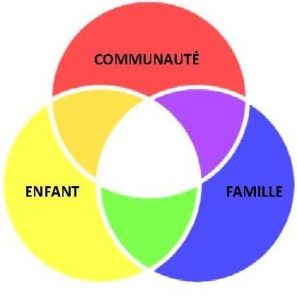Ecosystems
An ecosystemic approach is considering the child and his or her different environments (called "systems") in a dynamic relationship where all systems (child, family, community) have the capacity to influence each other. In an ecosystem approach, the synergy between each of the systems is recognised and protective factors are identified. A protective factor is a personal and/or environmental determinant that promotes the adaptation of individuals in a risky environment. The aim is to act on all the factors in order to promote the child's overall development.
CHILD :
To provide individual support to children to develop their reading skills as well as many cross-curricular skills necessary for their personal, social and academic development;
FAMILY :
To equip and support parents in order to restore their confidence in their role as educators, to demystify the school system and to act as a vehicle for communication between the family and the community;
COMMUNITY :
To train and advise community workers, institutional and school staff in family literacy and intercultural approaches.

Legend
Child chart Family chart Community table
We present our analysis here in the form of simplified tables. We start with findings based on data collection and field observations. Then we identify the corresponding protective factors. Finally, the objectives or "desired transformations" are found in the third column followed by the actions implemented by JAME in relation to each finding.
